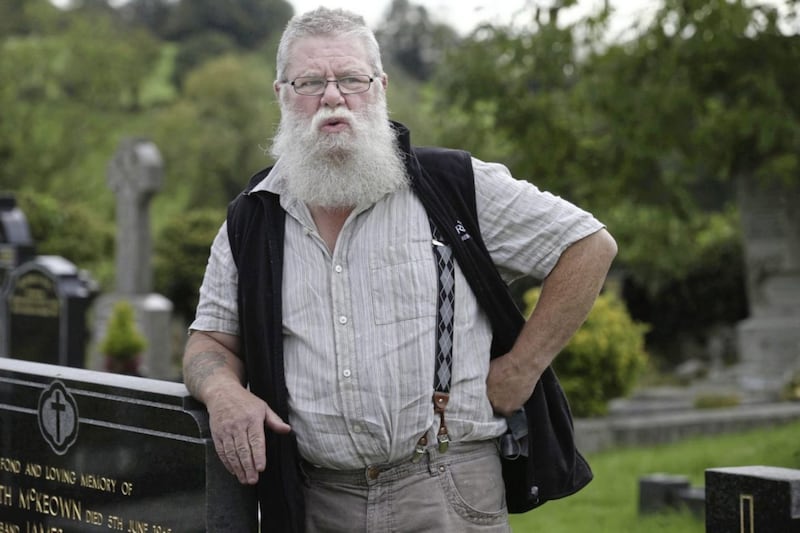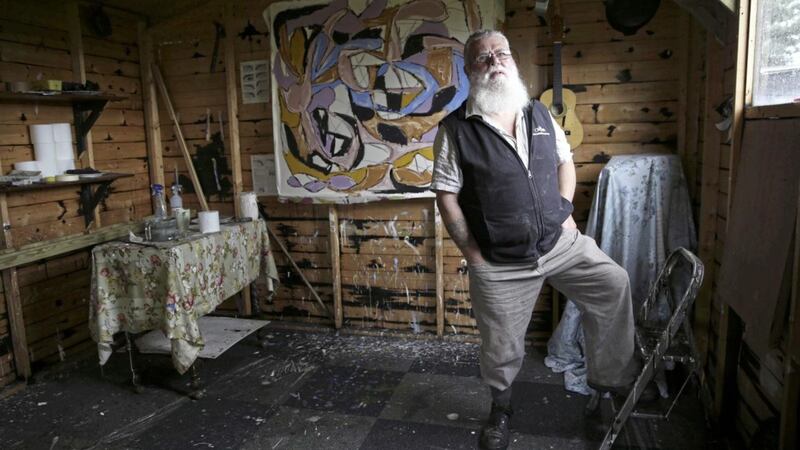EX-UVF prisoner Garfield Beattie has said he will not co-operate with an investigation into the activities of the Glenanne Gang headed by Jon Boutcher.
The former English police chief was appointed last year to investigate the notorious gang, which included members of the RUC, UDR and UVF and has been blamed for dozens of sectarian murders in the mid-1970s.
Beattie, who served 16 years in jail for three sectarian killings, was arrested last week on suspicion of making threats to kill Mid Ulster Aontú councillor Denise Mullen.
Her father Denis was shot dead at his home near Moy, Co Tyrone in September 1975.
Police said Beattie was released to be “reported to the Public Prosecution Service”.
The 64-year-old was also convicted of killing two other men, Frederick McLoughlin near Moy in 1976 and Pat McNeice, near Loughgall in the same year.
However, he said he doesn't accept the existence of the Glenanne Gang, which is said to have been based at a south Armagh farm owned by RUC man James Mitchell.
He claimed there was no formal structure.

“There is no such thing as the Glenanne Gang,” he said.
“That's a fictitious organisation.”
Beattie referred to previous claims there were “three or four UVF units operating in the area”.
“There was no structure as a gang,” he said.
“They were working through each other, yes. But they weren't an actual, cohesive, gang.”
The former loyalist claimed that “an awful lot of disinformation has been fed into the system” about the Glenanne Gang but admits Mitchell's farm may have been used.
“My knowledge is limited,” he added.
And he said he has no intention of working with the Boutcher team.
“Boutcher is a lot of nonsense.
“They are going to be chasing their tail.
“You are going around in circles, it's like a maze.
“He is going around a maze and he is going to come out in the same place (as he went in).”
Despite the passage of time Beattie says he still has concerns for his own safety, although he is more focused on the potential threat from British intelligence.
“I am very, very cagey with what I say, you can meet an accident very easily."
Members of the Glenanne Gang have been accused of involvement in the 1974 Dublin and Monaghan bombings, which resulted in the deaths of 33 people.
However, Beattie believes the bombings were the work of British intelligence.
He also suggests they were involved in the murder of Peter and Jane McKearney near Moy in October 1975.
Beattie, who is also known as Gerald, claims that a former senior RUC man blocked gardaí from interviewing him when he was in custody in August 1976.
“(He) and another boy came in and they said 'Gerald, there are officers coming up from the Irish republic to question you'.
“Don't speak to them, don't tell them anything, we will try to block it.
“I had admitted to the three murders. What did the guards suspect?
“That's the God's truth. I never spoke to them, they said 'we are going to block it' and they must have blocked it.”
Read more:
- Former UVF man Garfield Beattie: 'My grandfather was in the IRA'
- Former UVF man Garfield Beattie claims he did not threaten victim's daughter
He said while he has no knowledge of the Dublin or Monaghan attacks, he believes the RUC feared he might break under Garda interrogation.
“They could have broke me. All they had to do was lift my da. I had a soft spot for my da.
“(They) could have broken me and didn't - why? Because I knew too much.
“I am not lying to you, I am a Christian man.”
After his arrest in August 1976, Beattie led police to an arms dump in north Armagh which included a Sterling sub machine gun which had been stolen from a UDR base at Glenanne, in south Armagh, in 1971.
That gun was used in seven different attacks resulting in the deaths of 11 people, the first being Denis Mullen and the last Patrick McNeice.
He also led police to two other weapons and ammunition.
He claimed the Sterling weapon was transported to south Armagh to be used in the murder of the three Reavey brothers in Whitecross in January 1976 by north Armagh loyalist Ted Sinclair.
Beattie said he ended up with the deadly weapon after Sinclair was arrested and it was hidden close to his home in Co Armagh after Frederick McLoughlin died following a gun attack at Eagle Bar near Moy in May 1976.
“He (Sinclair) was ex B-Special and he was lifted and I ended up with it (the Sterling),” he said.
“It was hid in Annaghmore Moss after the Eagle Bar.
“The British army had dug for it, an informer told them it was in the moss.”
Beattie claims he came into possession of the gun in May 1976.
It was then used to kill Mr McLoughlin and Mr McNeice.
He said he decided to reveal the whereabouts of the gun after his conscience was pricked by a police officer during questioning.
“When they were questioning me about it I was not saying anything for three days,” he said.
“This Christian fellow said 'Garfield, if we don't get the gun more innocent people will die'.
“That's when I gave them the gun.”
Read more:
- Former UVF man Garfield Beattie: 'My grandfather was in the IRA'
- Former UVF man Garfield Beattie claims he did not threaten victim's daughter







